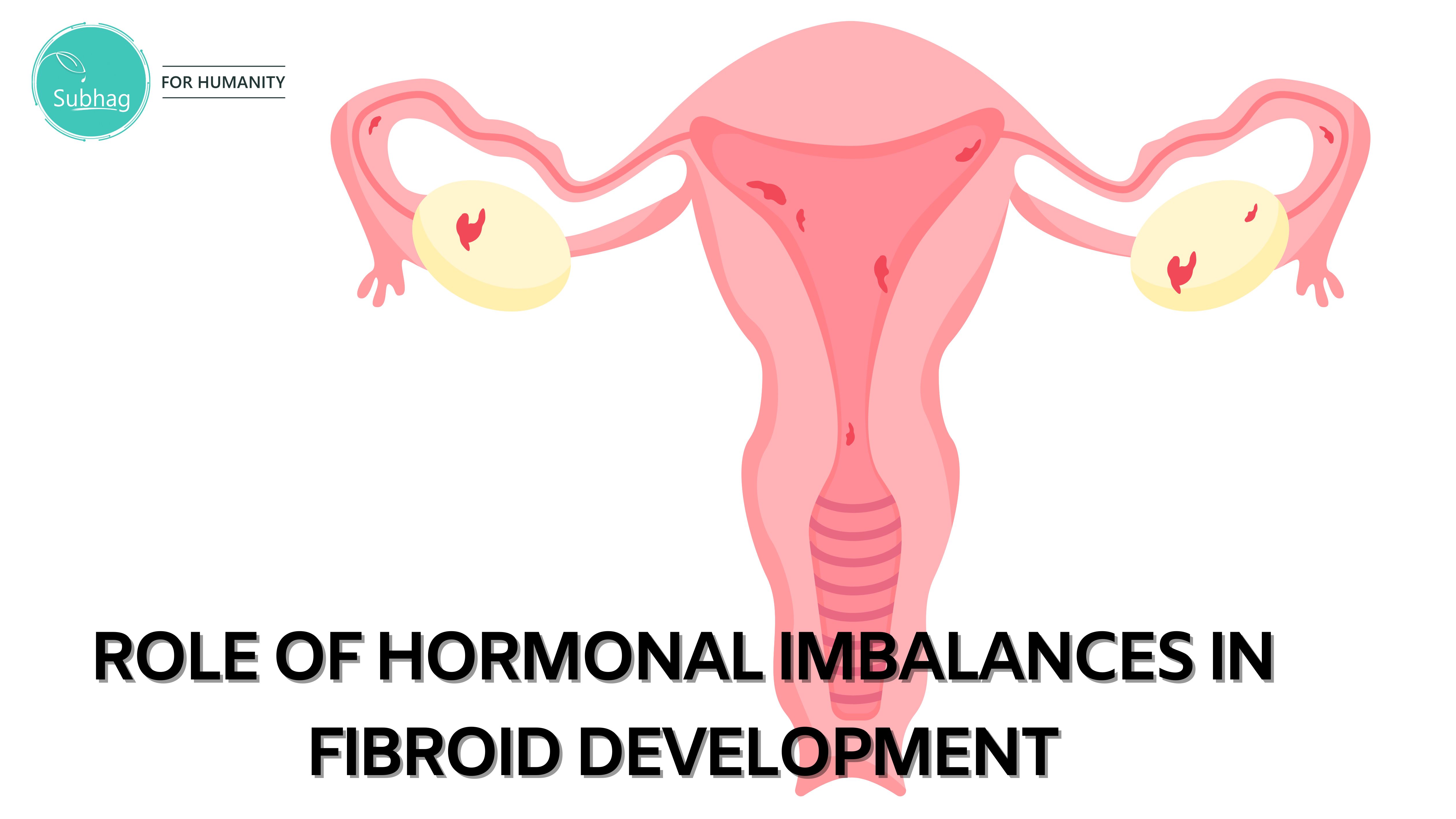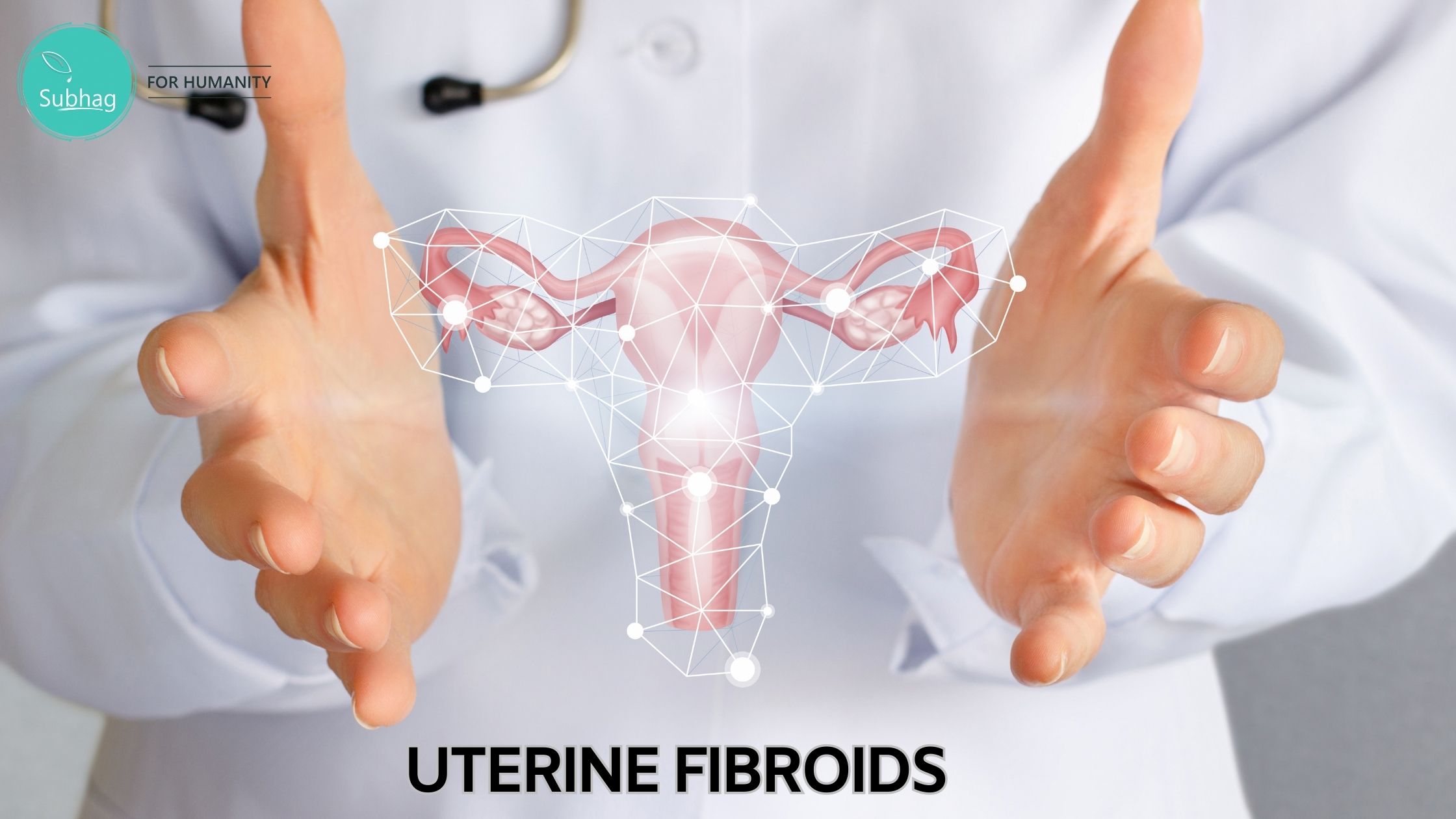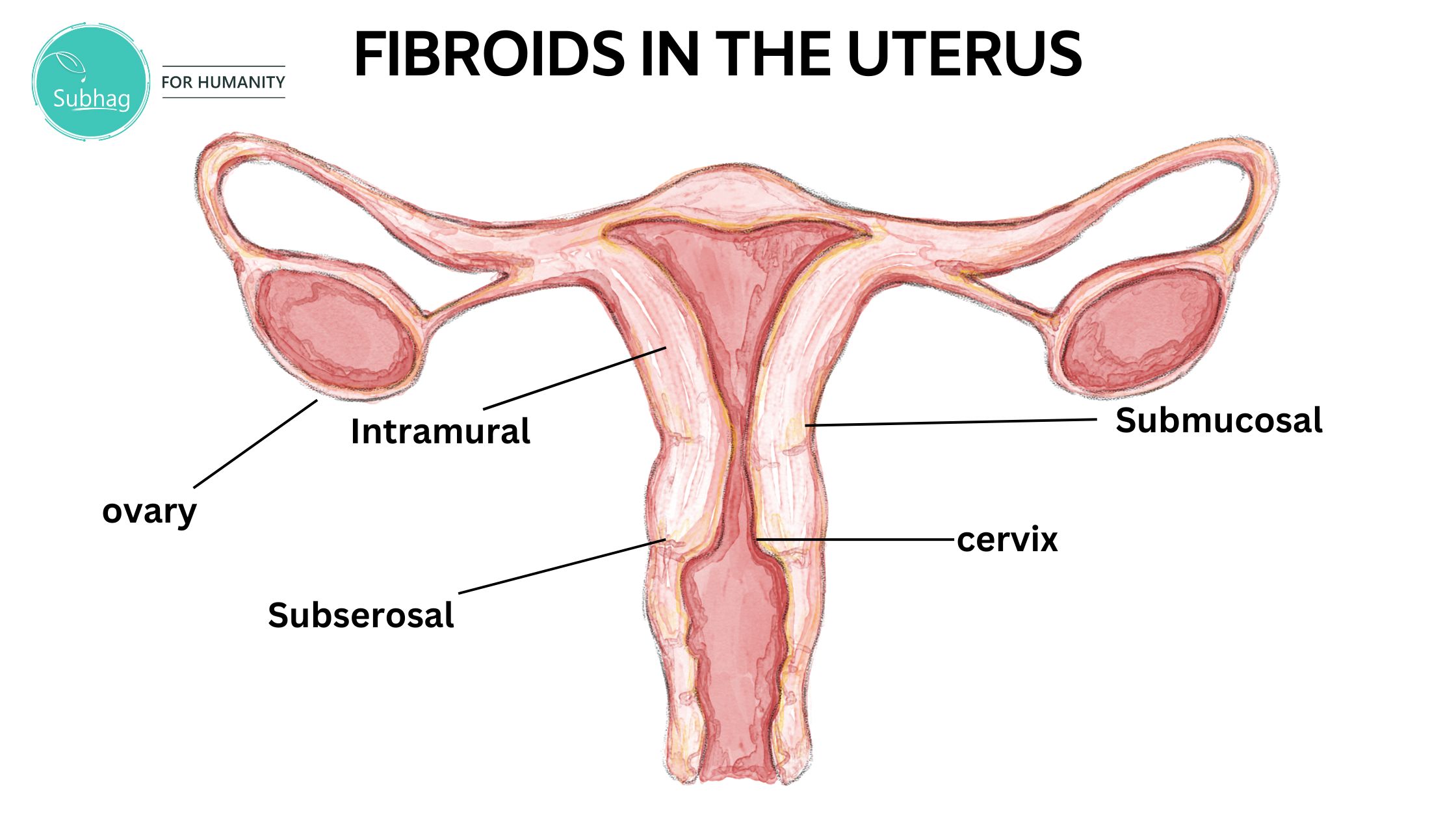What are the symptoms of fibroids in the uterus?
Common symptoms of fibroids in the uterus include heavy or prolonged menstrual periods, pelvic pain or pressure, frequent urination, difficulty emptying the bladder, constipation, and lower back pain. Other symptoms may include anemia, infertility, and complications during pregnancy and childbirth.
If you’re a woman who has been experiencing abnormal menstrual bleeding, pelvic pain, or fertility issues, it’s important to understand the possible causes behind these symptoms.
One common condition that could be responsible is uterine fibroids. In this comprehensive blog, we will delve into everything you need to know about fibroids in the uterus.
From understanding what they are and the different types of fibroids, to recognizing the symptoms and exploring various treatment options.
We will also discuss how hormonal imbalances play a role in their development and how they can be diagnosed through ultrasound, MRI, and hysteroscopy.
Whether you are seeking answers for yourself or someone you care about, this blog will provide valuable insights into fibroids and help you make informed decisions about your health.
Understanding Uterine Fibroids
- Uterine fibroids are noncancerous growths that develop in the uterus.
- These fibroids can vary in size and location within the uterus.
- Common symptoms of uterine fibroids include heavy menstrual bleeding, pelvic pain or pressure, frequent urination, and anemia due to excessive bleeding.
- Several factors can increase the risk of developing fibroids, such as a family history, hormonal imbalances, and obesity.
- Treatment options for uterine fibroids include medication to manage symptoms, surgery like myomectomy or hysterectomy, and minimally invasive procedures such as uterine artery embolization or endometrial ablation.
- Lifestyle changes and self-care strategies can also help manage the symptoms of fibroids.
Prevalence and Risk Factors
Uterine fibroids, also known as leiomyomas, are non-cancerous growths that affect millions of women worldwide.
Risk factors for developing fibroids include age, family history, hormonal imbalances, and the location of the uterus in the pelvis.
African American women have a higher risk compared to other ethnic groups. Symptoms of fibroids can include heavy menstrual bleeding, pelvic pain, frequent urination, particularly during heavy periods, and severe symptoms.
Treatment options for fibroids include medication, minimally invasive procedures such as uterine fibroid embolization, and surgery with a small incision.
It’s important for women to be aware of the prevalence of fibroids and the risk factors associated with them in order to seek appropriate medical attention for women’s health.
Role of Hormonal Imbalances in Fibroid Development
Excess estrogen levels have been associated with the development of uterine fibroids, which are non-cancerous growths in the uterus. These growths can become quite large and require a significant blood supply to sustain them. It is important to note that hormonal treatments for uterine fibroids may have side effects, and it is crucial to consult with a healthcare professional before starting any treatment.
Estrogen dominance can contribute to the growth and enlargement of fibroids.
Imbalances in other hormones like progesterone and testosterone may also play a role in fibroid development. Additionally, research has shown that gonadotropin-releasing hormone (GnRH) agonists can be used to shrink fibroids by suppressing the production of estrogen and progesterone. It is important to note that fibroids are growths that develop in the uterus, not the ovaries.

Hormonal changes during pregnancy or menopause can impact the growth and symptoms of uterine fibroids. Abdominal myomectomy is a surgical procedure that removes fibroids from the uterus and is often recommended for women who wish to preserve their fertility. In some cases, the procedure may involve the removal of the fallopian tubes as well.
Balancing hormone levels through medication or lifestyle changes can help manage the symptoms and growth of fibroids, especially in overweight individuals. Laparoscopy is a minimally invasive surgical procedure that can also be used to remove fibroids and alleviate symptoms.
By addressing hormonal imbalances, women can potentially reduce the size of fibroids and alleviate associated symptoms. It is important to note that over-the-counter pain relievers such as ibuprofen can also help manage symptoms like cramping and discomfort.
Classifying Uterine Fibroids
Classifying Uterine Fibroids:
- Uterine fibroids can be classified based on their location within the uterus.
- Subserosal fibroids grow outside the uterus and may put pressure on nearby organs.
- Intramural fibroids develop within the muscular wall of the uterus and can cause heavy or painful periods.
- Submucosal fibroids grow inside the uterine cavity and may lead to heavy bleeding and fertility issues.
- Pedunculated fibroids are attached to the uterus by a stalk and may cause pain or discomfort.
Treatment options for fibroids include medication, non-invasive procedures, and surgery. It is important to seek medical attention if you experience any abnormal vaginal bleeding, as this may be a symptom of fibroids.
1.Intramural Fibroids
Intramural fibroids, also known as myomas, are the most common type of fibroids, growing within the muscular wall of the uterus.
They can cause heavy menstrual bleeding and pelvic pain.
These fibroids may interfere with fertility and also pose complications during pregnancy, including infertility in the reproductive years.
Treatment options for intramural fibroids may include medication, minimally invasive procedures, or surgery. For women’s health, it is important to discuss the best treatment option with a healthcare provider.
It is crucial to consult with a healthcare professional for an accurate diagnosis and personalized treatment plan.
It is important to note that intramural fibroids can be detected through ultrasound or MRI imaging.
2.Submucosal Fibroids
Submucosal fibroids, which develop just beneath the inner lining of the uterus, can cause heavy menstrual bleeding and fertility issues.
These fibroids may be detected through imaging tests like ultrasounds or MRIs. Treatment options for submucosal fibroids include medication, minimally invasive procedures, or surgery.
It is essential to consult with a healthcare provider to determine the most appropriate treatment approach for submucosal fibroids.
Remember, submucosal fibroids are just one type of uterine fibroids, and it’s crucial to understand the different types and their specific characteristics to receive an accurate diagnosis and personalized treatment plan.
3. Subserosal Fibroids
Subserosal fibroids, unlike intramural or submucosal fibroids, grow outside the uterus, exerting pressure on nearby organs.
They can be attached to the uterus by a stalk or have a broad base. Although subserosal fibroids may not always cause significant symptoms, they can lead to fertility issues.
The most appropriate treatment approach for subserosal fibroids depends on factors like size, location, and symptoms.
Treatment options can include medication, minimally invasive procedures, or surgery.
Consulting with a healthcare professional is important to determine the best course of action for managing subserosal fibroids.
4.Pedunculated Fibroids
Pedunculated fibroids, which are attached to the uterus by a thin stalk, can develop both on the inside and outside of the uterus. When these fibroids twist on their stalk, they may cause pain or discomfort.
In some cases, surgical removal is the recommended treatment option for pedunculated fibroids.
It is crucial to consult with a healthcare professional to determine the most suitable approach.
By considering the individual’s symptoms, medical history, and overall health, a healthcare provider can develop a personalized treatment plan that addresses the specific needs and concerns of the patient.
Recognizing the Symptoms of Fibroids
Recognizing the Symptoms of Fibroids:
Symptoms of fibroids in the uterus can vary from person to person, but there are several common signs to watch out for.
Heavy or prolonged menstrual periods are often a key indicator of fibroids.

Pelvic pain or pressure may also be experienced. Other symptoms include frequent urination, difficulty getting pregnant or recurrent miscarriages, abdominal bloating or swelling, and back or leg pain.
If you are experiencing any of these symptoms, it is important to consult with a healthcare professional for further evaluation and guidance.
Menstrual Irregularities
Menstrual irregularities, such as heavy or prolonged periods, can indicate the presence of fibroids in the uterus.
Changes in the menstrual cycle, including shorter or longer cycles, or irregular bleeding, can also be a sign of fibroids.
Women who experience heavy bleeding or frequent spotting between periods should consider the possibility of uterine fibroids. Additionally, fibroids can cause painful periods and more intense cramping than usual.
If you notice any significant changes in your menstrual cycle, it is important to consult with your healthcare provider.
Physical Discomfort and Pain
Fibroids in the uterus can cause physical discomfort and pain.
Many women experience pelvic pain, cramping, and discomfort during menstruation or sexual intercourse due to the presence of fibroids.
Lower back pain or pressure may also be felt. Additionally, fibroids often lead to heavy menstrual bleeding and prolonged periods.
Bloating and a feeling of fullness in the abdomen are common symptoms as well.
In severe cases, fibroids can cause urinary frequency or constipation.
It’s important for women experiencing these symptoms to consult with their healthcare provider to explore appropriate treatment options.
How are Uterine Fibroids Diagnosed?
Uterine fibroids can be diagnosed through a pelvic exam.
Additional tests like ultrasound or MRI may be done to confirm the diagnosis.
Other diagnostic methods include hysteroscopy, hysterosalpingography, and biopsy.
Consult a healthcare professional for an accurate diagnosis and treatment plan.

Ultrasound and MRI
Ultrasound and MRI are commonly used imaging techniques to diagnose fibroids in the uterus.
Ultrasound utilizes sound waves to create detailed images of the uterus, providing valuable information about the size, shape, and number of fibroids present.
On the other hand, MRI (magnetic resonance imaging) offers even more detailed images that accurately identify fibroids and their specific location within the uterus.
Both ultrasound and MRI are non-invasive and safe procedures, allowing doctors to make an accurate diagnosis of uterine fibroids.
While ultrasound is typically used as a first-line diagnostic tool, MRI may be recommended for more complex cases or to evaluate potential treatment options.
Hysteroscopy
Hysteroscopy is a procedure that involves the insertion of a thin, lighted tube called a hysteroscope into the uterus through the vagina and cervix.
This allows doctors to examine the uterine lining and identify any fibroids present.
It is a safe and effective outpatient procedure that can help determine the size, location, and number of fibroids in the uterus.
Hysteroscopy is commonly used for diagnosing fibroids and provides valuable information for developing an appropriate treatment plan.
By utilizing this minimally invasive technique, healthcare professionals can effectively assess the extent of fibroid growth and evaluate potential complications.
Fibroids in the Uterus
Exploring Treatment Options for Fibroids
When it comes to treating fibroids in the uterus, there are various options to consider based on individual factors. One option is medication, which can help manage symptoms and shrink fibroids.
Another option is minimally invasive procedures, such as uterine artery embolization or focused ultrasound surgery, which offer less invasive alternatives.
In some cases, surgical options like hysterectomy or myomectomy may be necessary for severe or persistent symptoms.
Additionally, alternative therapies like acupuncture or herbal remedies may provide relief.
It’s important to take into account factors like age, desire for future fertility, and overall health when determining the best treatment option.
Watchful Waiting
Watchful waiting is a conservative approach to managing fibroids in the uterus.
It involves monitoring the growth and symptoms of fibroids over time without immediate treatment.
This approach is typically recommended when the fibroids are small, symptom-free, and not affecting fertility or quality of life.
Regular check-ups and ultrasound scans are necessary to track the size and development of the fibroids.
Watchful waiting allows for the potential spontaneous shrinkage of fibroids without invasive procedures.
However, if symptoms worsen or the fibroids grow significantly, other treatment options may be considered.
Role of Medications
Medications play a crucial role in managing symptoms associated with uterine fibroids.
They can effectively address issues like heavy bleeding and pelvic pain.
Hormonal medications, such as birth control pills, are commonly used to regulate menstrual cycles and reduce excessive bleeding.
Another option is GnRH agonists, which work by suppressing hormone production and can help shrink fibroids.
NSAIDs can provide temporary relief from pain and also reduce inflammation.
It is important to consult with a healthcare professional to determine the most suitable medication based on individual circumstances.
Minimally Invasive Procedures
Minimally invasive procedures provide a range of benefits compared to traditional surgery for fibroids in the uterus.
They offer less pain, shorter recovery time, and reduced risk.
Some common options include uterine artery embolization, myomectomy, and focused ultrasound surgery.
These procedures specifically target and remove fibroids without removing the uterus.
One advantage is that they can often be performed on an outpatient basis, minimizing hospital stays.
If you’re considering these procedures, it’s important to discuss with your doctor to determine the most suitable option for your specific case.
When is Hysterectomy Needed?
When should a hysterectomy be considered for uterine fibroids?
Hysterectomy may be necessary for severe and persistent symptoms, failed or unsuitable treatments, large or multiple fibroids, and rapid fibroid growth.
Always discuss the potential risks and benefits with your doctor before making a decision.
Conclusion
In conclusion, understanding the causes, symptoms, and treatment options for uterine fibroids is crucial for women’s health.
While many women may have fibroids without experiencing any symptoms, others may face various physical discomforts and menstrual irregularities.
It is important to consult a healthcare professional for an accurate diagnosis using techniques such as ultrasound, MRI, or hysteroscopy.
Treatment options range from watchful waiting to medications and minimally invasive procedures, depending on the severity of symptoms and the desire for fertility preservation. In some cases, a hysterectomy may be necessary.
Remember, early detection and timely intervention can significantly improve the quality of life for individuals with uterine fibroids.





